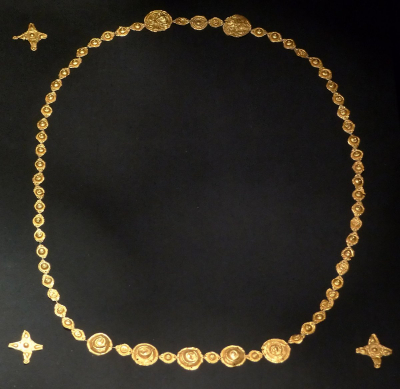The Pyrenees (; Spanish: Pirineos [piineos]; French: Pyrnes [piene] (listen); Catalan: Pirineu [piinw]; Basque: Pirinioak [piini.o.ak]; Occitan: Pirenus [pienws]; Aragonese: Pirineus) is a mountain range straddling the border of France and Spain. It extends nearly 500 km (310 mi) from its union with the Cantabrian Mountains to Cap de Creus on the Mediterranean coast. It reaches a maximum altitude of 3,404 metres (11,168 ft) at the peak of Aneto.For the most part, the main crest forms a divide between Spain and France, with the microstate of Andorra sandwiched in between. Historically, the Crown of Aragon and the Kingdom of Navarre extended on both sides of the mountain range.
The Vandals were a Germanic people who first inhabited what is now southern Poland. They established Vandal kingdoms on the Iberian Peninsula, Mediterranean islands, and North Africa in the fifth century.The Vandals migrated to the area between the lower Oder and Vistula rivers in the second century BC and settled in Silesia from around 120 BC. They are associated with the Przeworsk culture and were possibly the same people as the Lugii. Expanding into Dacia during the Marcomannic Wars and to Pannonia during the Crisis of the Third Century, the Vandals were confined to Pannonia by the Goths around 330 AD, where they received permission to settle from Constantine the Great. Around 400, raids by the Huns from the east forced many Germanic tribes to migrate west into the territory of the Roman Empire and, fearing that they might be targeted next, the Vandals were also pushed westwards, crossing the Rhine into Gaul along with other tribes in 406. In 409, the Vandals crossed the Pyrenees into the Iberian Peninsula, where the Hasdingi and the Silingi settled in Gallaecia (northwest Iberia) and Baetica (south-central Iberia).
On the orders of the Romans, the Visigoths invaded Iberia in 418. They almost wiped out the Alans and Silingi Vandals who voluntarily subjected themselves to the rule of Hasdingian leader Gunderic. Gunderic was then pushed from Gallaecia to Baetica by a Roman-Suebi coalition in 419. In 429, under king Genseric (reigned 428–477), the Vandals entered North Africa. By 439 they established a kingdom which included the Roman province of Africa as well as Sicily, Corsica, Sardinia, Malta and the Balearic Islands. They fended off several Roman attempts to recapture the African province, and sacked the city of Rome in 455. Their kingdom collapsed in the Vandalic War of 533–34, in which Emperor Justinian I's forces reconquered the province for the Eastern Roman Empire.
As the Vandals plundered Rome for fourteen days, Renaissance and early-modern writers characterized the Vandals as prototypical barbarians. This led to the use of the term "vandalism" to describe any pointless destruction, particularly the "barbarian" defacing of artwork. However, some modern historians have emphasised the role of Vandals as continuators of aspects of Roman culture, in the transitional period from Late Antiquity to the Early Middle Ages.

 English
English  español
español  français
français  português
português  русский
русский  العربية
العربية  简体中文
简体中文 
